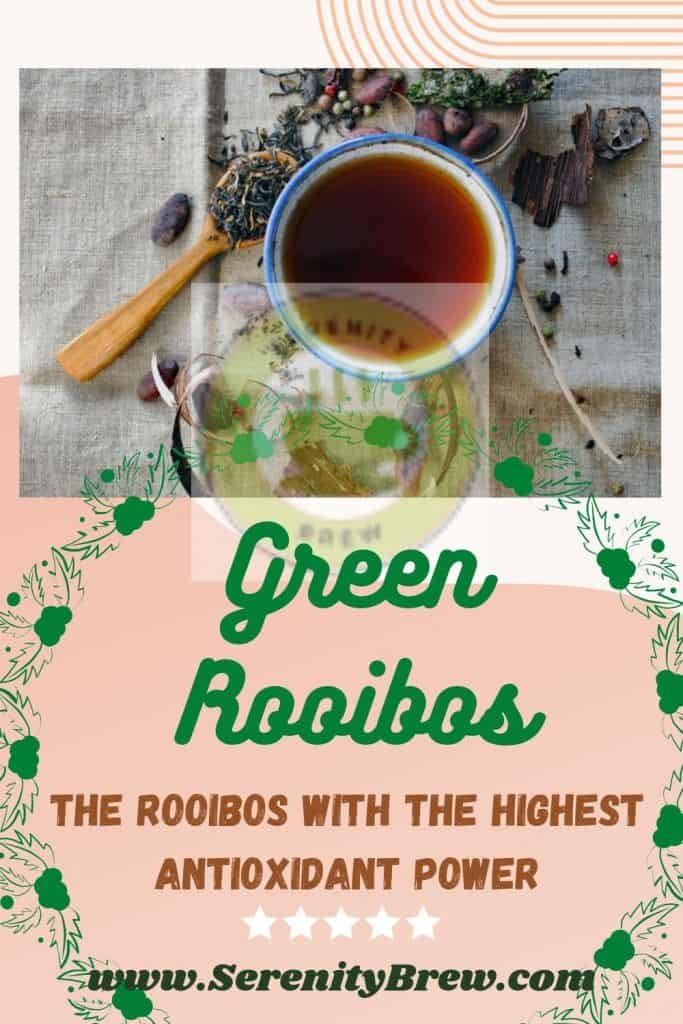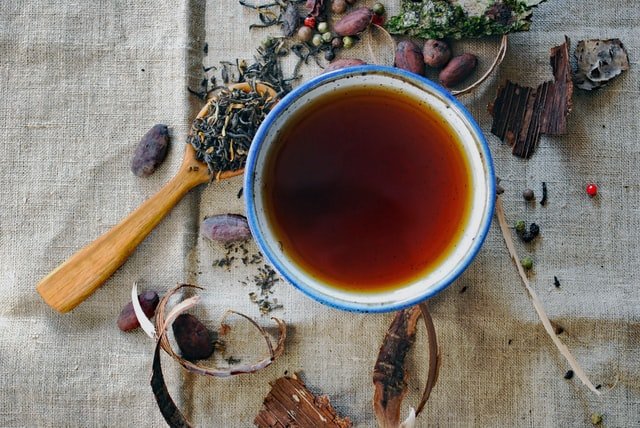
You might be surprised to learn that there is a green rooibos and that it is different from the rooibos you are used to. Yes, this tisane made from the leaves of a South African bush can be produced in different ways and give rise to a green variety and a red one, which is better known.
Rooibos, in general, has become popular in recent times among those looking for a tasty drink without caffeine. In fact, it is often known as the tea without theine, although in reality it is not really a tea but an herbal infusion.
In this article, we’ll explain exactly what green rooibos is and why it’s worth trying.
Cultivation and processing of green rooibos
Native to the Cederberg and Sandveld mountains of South Africa, rooibos in its two varieties comes from a bush with elongated leaves and with a great power of adaptation to the harsh climatic conditions of the region. A curiosity? Rooibos in Afrikaans means red bush, a color that this tisane adopts in its cup in its most widespread variety.
The Aspalathus linearis plant grows wild, and can even reach two meters in height. It can be recognized by its needle-shaped leaves and yellow flowers that appear in late spring or early summer. From each flower, a leguminous fruit is born.
To make rooibos, its leaves are collected and, depending on the desired variety, they are subjected to one or another process. In the case of green rooibos, the leaves do not oxidize or ferment but are dried in a controlled manner immediately after harvest; while the leaves intended for red rooibos are oxidized until they obtain their usual reddish tone, and then dry.
It is important to point out that the preparation of green rooibos must be very careful since the leaves must not be crushed or come into contact with water, in order to obtain a high-quality infusion. The leaves must be permanently turned and removed to prevent fermentation from starting before the drying process is complete. Due to its more complex manufacturing process, green rooibos is more expensive than red.
The taste of green rooibos
Being a non-oxidized tisane, green rooibos has a more vegetable flavor than red rooibos. Its little oxidation is also evident in a light body and a smooth flavor, sweet on the palate and without any astringency or bitterness due to its lack of tannins.
Oxidation affects rooibos in a similar way as it does on teas. While green teas, which are less oxidized, have herbaceous and vegetable flavors, while black teas offer fuller bodies and more intense flavors.
Either way, green rooibos offers a different and simply delicious flavor. The best? In addition to its refreshing flavor, it provides an interesting amount of antioxidants and different health benefits.
Health benefits
As with green tea, by avoiding the fermentation of the leaves, they keep all of their content of polyphenols and other valuable nutrients for our health. In fact, green rooibos has a greater antioxidant effect than red rooibos. In other words, it provides a greater number of molecules capable of fighting free radicals to protect the body from cell damage and premature aging.
On the other hand, various studies have indicated that consuming rooibos (any of its varieties) would reduce insomnia, tension headaches and irritability. Containing no caffeine, it is a good option to help relax the body at night to fall asleep quickly.
Its benefits usually include the relief of colic in infants, a reduction in the risk of cardiovascular diseases, the control of blood pressure and blood sugar, the relief of diarrhea and stomach cramps, and an improvement of the immune system. Some of the literature supporting these claims is still in the animal study phase. Here is a more detailed article on the health effects of rooibos.
In addition, certain investigations found a relationship between the habitual consumption of rooibos and the reduction of the risk of suffering from cancer. Of course, more research in this regard would be necessary to obtain conclusive data in this regard.
How to prepare a good cup of green rooibos?

You can buy your green rooibos in bulk at your trusted herbalist. Getting this variety in a bag is not so easy and, in particular, we recommend the first option.
To prepare a rich cup of green rooibos, heat the water to 85°C. Pay special attention to the temperature since, as it is an unfermented tisane, it is very sensitive to heat and, as with green tea, it can go bad.
Infuse a heaping teaspoon of dessert for 7 minutes. She strains and drinks. You will see how the delicate flavor of green rooibos conquers your palate! Dare to try the green rooibos. You will not regret it!
